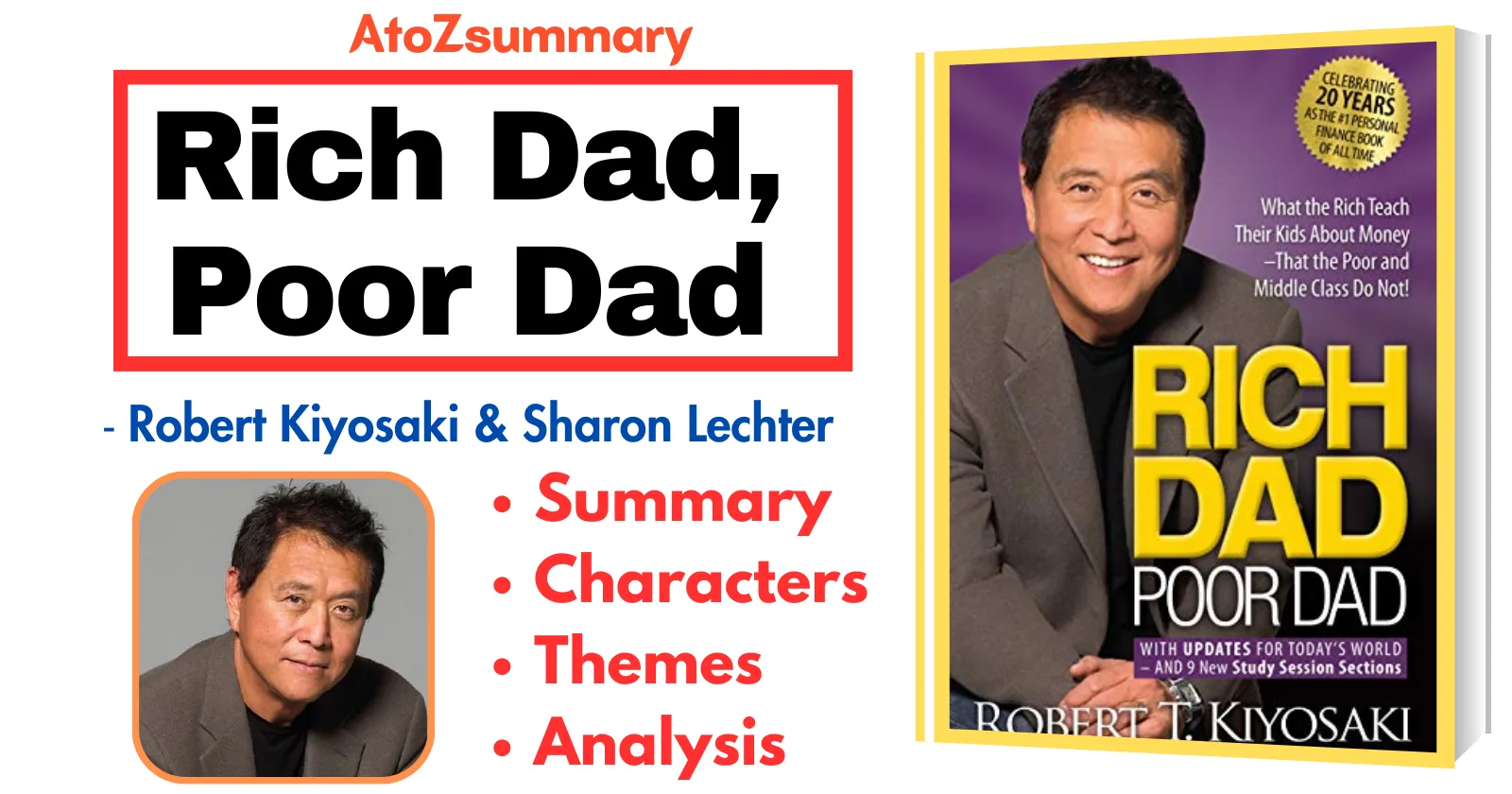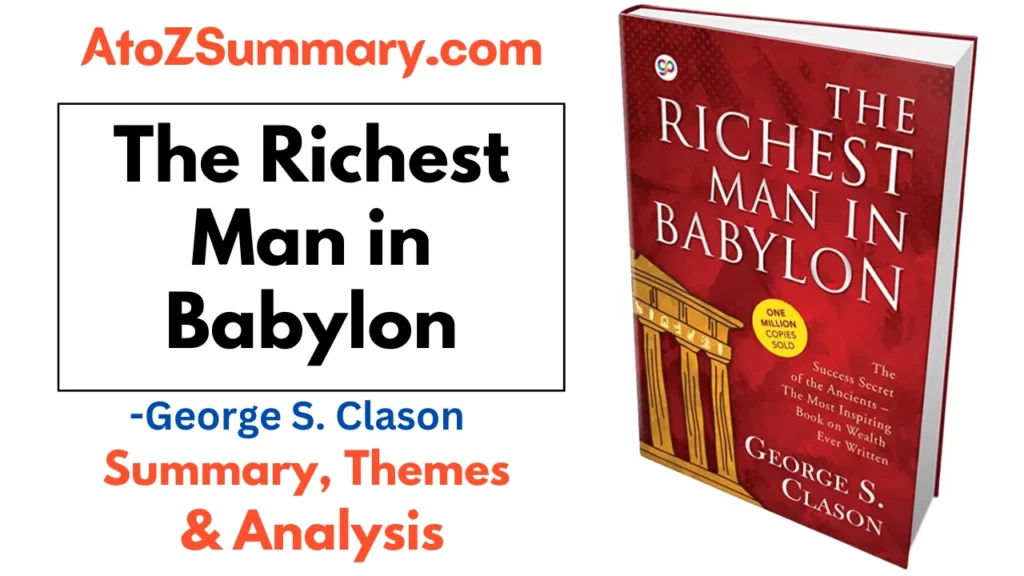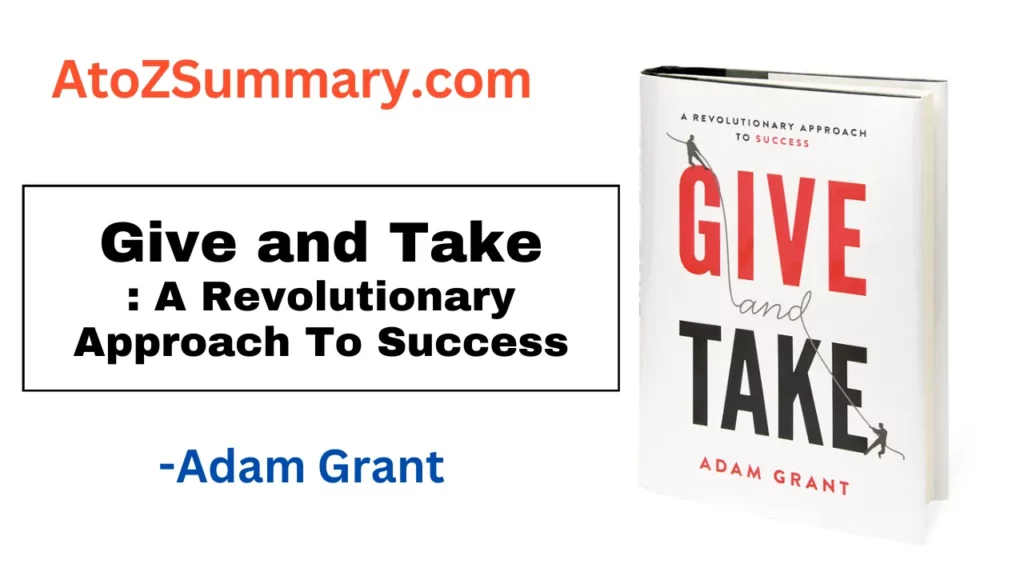About the Book: Rich Dad Poor Dad
| Title | Rich Dad Poor Dad |
| Authors | Robert Kiyosaki & Sharon Lechter |
| Genre | Personal Finance, Self-Help |
| Published Year | 1997 |
| Main Themes | Financial Education, Investing, Entrepreneurship |
| Key Concepts | – Assets vs. Liabilities – Importance of Financial Literacy – Creating Passive Income – Rethinking Traditional Job Security |
| Central Idea | Contrasts two father figures (Rich Dad & Poor Dad) and their different approaches to money, emphasizing the importance of financial education and making money work for you. |
| Popular Quotes | “The poor and the middle-class work for money. The rich have money work for them.” |
| “It’s not how much money you make, but how much money you keep, how hard it works for you, and how many generations you keep it for.” | |
| Impact | Became a bestseller, influencing many to rethink their approach to money and investing. Widely considered a classic in personal finance literature. |
| Recommended For | Anyone interested in financial independence, investing, and a different perspective on wealth building. Suitable for readers of all financial backgrounds. |
Analysis: Rich Dad Poor Dad
“Rich Dad Poor Dad” by Robert Kiyosaki is a personal finance classic that contrasts two different approaches to money. Kiyosaki shares lessons he learned from his “Rich Dad,” who prioritizes financial education, investing, and entrepreneurship. In contrast, his “Poor Dad” represents traditional beliefs about working for a paycheck and job security.
The book encourages readers to rethink their attitudes toward money, assets, and liabilities, emphasizing the importance of financial literacy and making money work for you. It advocates for building assets, creating passive income, and taking calculated risks to achieve financial success.
Overall, “Rich Dad Poor Dad” challenges conventional wisdom about money and offers a mindset shift towards financial independence.
Characters: Rich Dad Poor Dad
The characters of “Rich Dad Poor Dad” by Robert Kiyosaki & Sharon Lechter are:
- Rich Dad: He is a successful entrepreneur and investor. Rich Dad believes in financial education, investing, and creating assets that generate income. He emphasizes the importance of thinking outside the traditional employment mindset.
- Poor Dad: He is the biological father of the author, Robert Kiyosaki. Poor Dad follows the conventional path of getting a good education, working for a steady job, and saving money. He represents the traditional approach to financial success.
Themes:
The themes of “Rich Dad Poor Dad” by Robert Kiyosaki & Sharon Lechter are:
- Wealth Mindset: The book emphasizes the importance of cultivating a mindset focused on creating wealth and financial independence.
- Assets vs. Liabilities: Kiyosaki introduces the concept of distinguishing between assets (things that put money in your pocket) and liabilities (things that take money out of your pocket).
- Financial Education: The book advocates for the value of financial education and self-learning in order to make informed and strategic financial decisions.
- Entrepreneurship: “Rich Dad Poor Dad” encourages readers to consider entrepreneurship and investing as paths to building wealth, rather than relying solely on traditional employment.
- Taking Risks: Kiyosaki encourages readers to overcome the fear of taking financial risks and to view mistakes as opportunities for learning and growth.
- Building Passive Income: The importance of creating and building passive income streams is highlighted as a key strategy for achieving financial independence.
Watch Full Video Summary of “Rich Dad Poor Dad”
Summary
Chapter 1: The Rich Don’t Work for Money
In the opening chapter of Rich Dad Poor Dad, Robert Kiyosaki introduces the concept of financial literacy and the importance of teaching children about money from an early age. He contrasts the financial philosophies of his two fathers, his highly educated but financially struggling real father (Poor Dad) and his friend’s father, a self-made millionaire (Rich Dad).
Kiyosaki recalls his childhood experiences when his two fathers gave him different advice about money. Poor Dad believed in working hard and getting a good education to earn a high income, while Rich Dad emphasized the importance of financial intelligence and learning how to make money work for you.
Chapter 2: Why Teach Financial Literacy?
In this chapter, Kiyosaki delves into the reasons why financial literacy is crucial for everyone. He argues that most people are not taught about money management, investing, and wealth creation, leading to financial struggles and a lack of control over their finances.
Kiyosaki highlights the importance of financial education in breaking free from the cycle of debt and dependency on a traditional job. He encourages readers to take control of their financial destinies by learning how to make money work for them rather than working for money their entire lives.
Chapter 3: Mind Your Own Business
In this chapter, Kiyosaki introduces the concept of owning businesses as a path to financial freedom. He explains that owning a business allows individuals to take control of their finances and create multiple streams of income.
Kiyosaki encourages readers to explore entrepreneurial opportunities and develop the mindset of a business owner, even if they don’t start their own company. He emphasizes the importance of understanding business principles and financial management.
Chapter 4: The history of taxes and the power of corporations
Rich Dad educates Kiyosaki on the history of taxes and how the rich use corporations to their advantage. He explains how understanding tax laws and utilizing legal loopholes can significantly impact one’s wealth. Kiyosaki learns the importance of financial literacy in navigating the complex world of taxes and how creating and managing corporations can be a powerful tool for wealth preservation and growth.
Chapter 5: The Rich Invent Money
In this chapter, Kiyosaki explores the concept of ‘inventing money’ and how it differentiates the rich from the middle class and poor. He explains that the rich don’t just rely on earning a paycheck; they find creative ways to generate income through investments, businesses, and other ventures.
Kiyosaki emphasizes the importance of thinking outside the box and developing entrepreneurial skills to achieve financial freedom. He encourages readers to challenge conventional financial thinking and seek out opportunities to create their own wealth.
Chapter 6: Work to Learn—Don’t Work for Money
Rich Dad emphasizes the importance of continuous learning and self-improvement. He encourages Kiyosaki to focus on acquiring skills and knowledge, even if it means working for free initially. The idea is that by investing in oneself and gaining valuable experience, one can eventually command higher earnings and create more opportunities for financial success.
Chapter 7: Overcoming Obstacles
This chapter addresses the challenges and obstacles that individuals face on their path to financial success. Kiyosaki identifies fear, cynicism, laziness, arrogance, and false hopes as common roadblocks.
He provides practical advice on overcoming these obstacles and developing the mindset and habits necessary for achieving financial freedom. Kiyosaki emphasizes the importance of perseverance, self-belief, and a commitment to continuous learning.
Chapter 8: Getting Started
In this chapter, Kiyosaki provides actionable steps for individuals to begin their journey towards financial freedom. He encourages readers to develop a financial plan, set financial goals, and take action to achieve them.
Kiyosaki emphasizes the importance of starting small and building a solid financial foundation. He provides guidance on investing, starting a business, and managing finances effectively.
Chapter 9: Still want more? Here Are Some To Do’s
The book concludes with actionable steps and recommendations for readers who want to apply the principles learned from Rich Dad. Kiyosaki provides a list of “To Do’s,” including suggestions for further reading, seeking out mentors, and taking concrete steps towards financial education and entrepreneurship.
FAQs
What is the moral of Rich Dad, Poor Dad?
The moral of Rich Dad, Poor Dad is that financial freedom is not about earning a high income, but rather about understanding money and making it work for you.
What is the main summary of Rich Dad, Poor Dad?
Rich Dad, Poor Dad teaches the importance of financial literacy and encourages readers to acquire assets, invest wisely, and take control of their finances to achieve financial freedom.
Which age should read Rich Dad Poor Dad?
The book “Rich Dad Poor Dad” is suitable for readers of all ages, but it is particularly beneficial for teenagers and young adults who are starting to think about their financial future.
What is the average reading time for rich dad poor dad?
The average reading time for Rich Dad Poor Dad is approximately 4 hours and 34 minutes at a pace of 250 words per minute.
Why is Rich Dad, Poor Dad so controversial?
Rich Dad, Poor Dad is controversial because it challenges conventional financial wisdom and advocates for unconventional methods of wealth creation.
How did Rich Dad Poor Dad get popular?
Rich Dad Poor Dad gained popularity by offering a simple and relatable approach to personal finance that challenged conventional wisdom and empowered individuals to take control of their financial destiny.





![Regretting You Summary, Themes, Synopsis & Characters [Book by Colleen Hoover] Regretting You Summary, Themes, Synopsis & Characters [Book by Colleen Hoover]](https://atozsummary.com/wp-content/uploads/2023/05/Regretting-You-Summary-Themes-Synopsis-Characters-Book-by-Colleen-Hoover-1024x576.webp)





